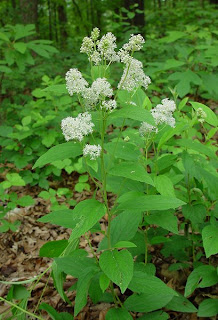PEPPER

Latin Name: Piper nigrum
Alternate Names: Black Pepper, Vine Pepper, White Pepper, Green Pepper
Family: PIPERACEAE
Parts Used: Dried unripe fruit.
Properties: Antibacterial, Anticatarrhal, Antioxidant, Antiseptic, Aromatic, Carminative, Circulatory Stimulant, Diaphoretic, Digestive Tonic, Diuretic, Rubefacient, Siliagogue, Stimulant, Stomach Tonic.
Internal Uses: Arthritis, Colic, Diarrhea, Flatulence, Headache, Indigestion, Nausea, Rheumatism, Stomachache, Vertigo
Internal Applications: Tea, Tincture, Capsules.
When Pepper is added to food in moderation, it stimulates both saliva and digestive secretions, including hydrochloric acid.
When Pepper is added to food in moderation, it stimulates both saliva and digestive secretions, including hydrochloric acid.
Topical Uses: Insect Repellent, Lice, Rheumatism, Ringworm
Topical Applications: Wash for ringworm and lice. Essential oil is added to perfumes and to massage oils for its stimulating and toning properties. Helpful for massage of rheumatic joints. Pepper is made into an insecticide spray to repel ants, boll weevils, flies, roaches, moths and silverfish.
Culinary uses: This condiment is used worldwide. Used to preserve food. Flavors vegetables, soups, stews and meats. Every good cook knows fresh ground is the best. White pepper is preferred if a cook is intent on a uniform color when making a white colored dish such as potato soup or cauliflower. Peppercorns are added to pickles and marinades.
Energetics: Pungent, Hot.
Chemical Constituents: Essential oil -- more is present in black pepper than in white pepper (beta-bisabolene, camphene, phellandrene, myristicin, pinene, safrole), resin, alkaloids (piperine, piperidine, chavicine), protein, chromium.
Comments: Piper is an ancient Latin name meaning 'plant'. Attila the Hun is said to have demanded a ransom of 3,000 pounds of Pepper during his siege of Rome (408 A.D.). The quest for Pepper prompted much world exploration and the herb was an important early trade item. Columbus was looking for a shorter route to India to find Pepper. The Pepper trade contributed greatly to the wealth of Venice. Pepper from India was considered one of the five essential luxuries along with African ivory, Arabian incense, Chinese silk and German amber. It was once a form of currency and even used to pay rent. In England in 1154, a Guild of Pepperers was formed to control spice trade. Pepper currently accounts for over one fourth of the world's spice trade.
In East Africa, Pepper is consumed in excess quantities as an abortifacient. It is also consumed in the belief that eating lots of pepper will make one less desirable to mosquitoes.
Black, green and white pepper are all from the same plant. Black pepper is from the unripe but fully grown berry. White pepper, a milder version, is from soaked and peeled mature fruits. Currently however, most commercial white pepper is pepper with the outer hull removed by machinery. Green peppercorns are harvested from young unripe berries and are less heating. They are usually preserved by freeze drying or pickling.
In East Africa, Pepper is consumed in excess quantities as an abortifacient. It is also consumed in the belief that eating lots of pepper will make one less desirable to mosquitoes.
Black, green and white pepper are all from the same plant. Black pepper is from the unripe but fully grown berry. White pepper, a milder version, is from soaked and peeled mature fruits. Currently however, most commercial white pepper is pepper with the outer hull removed by machinery. Green peppercorns are harvested from young unripe berries and are less heating. They are usually preserved by freeze drying or pickling.

